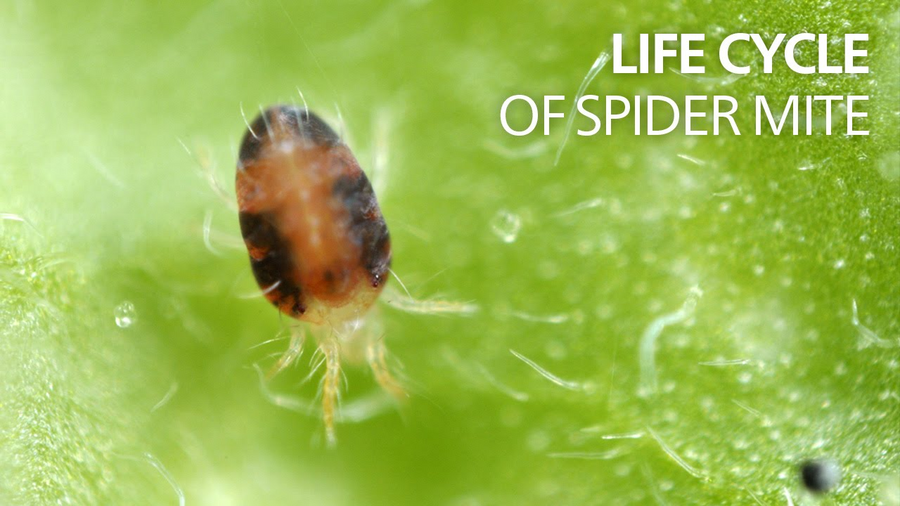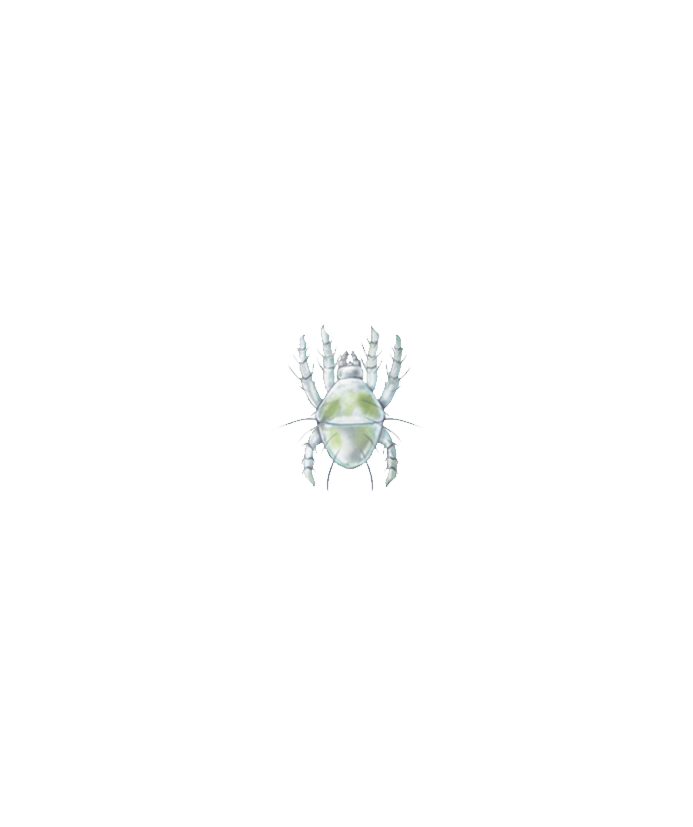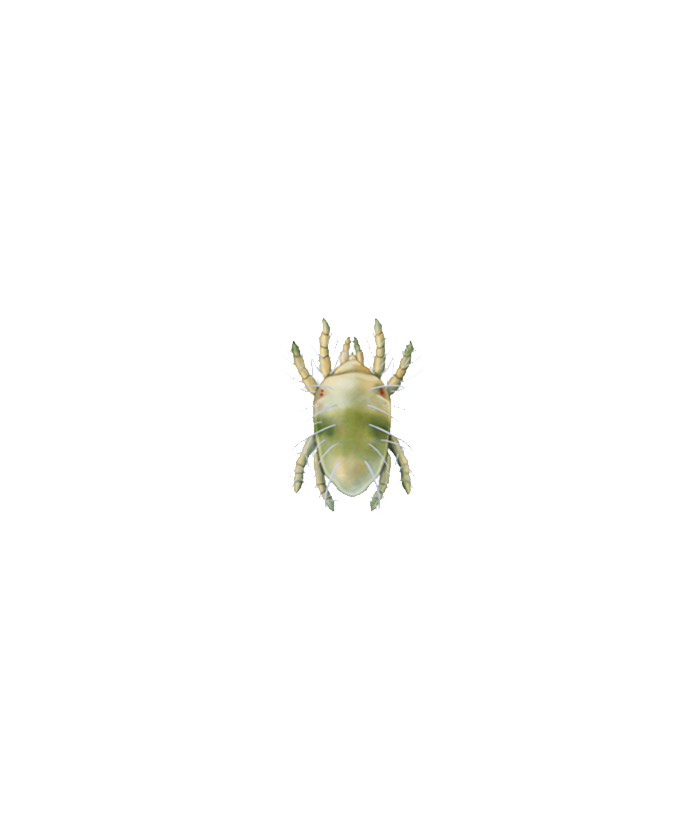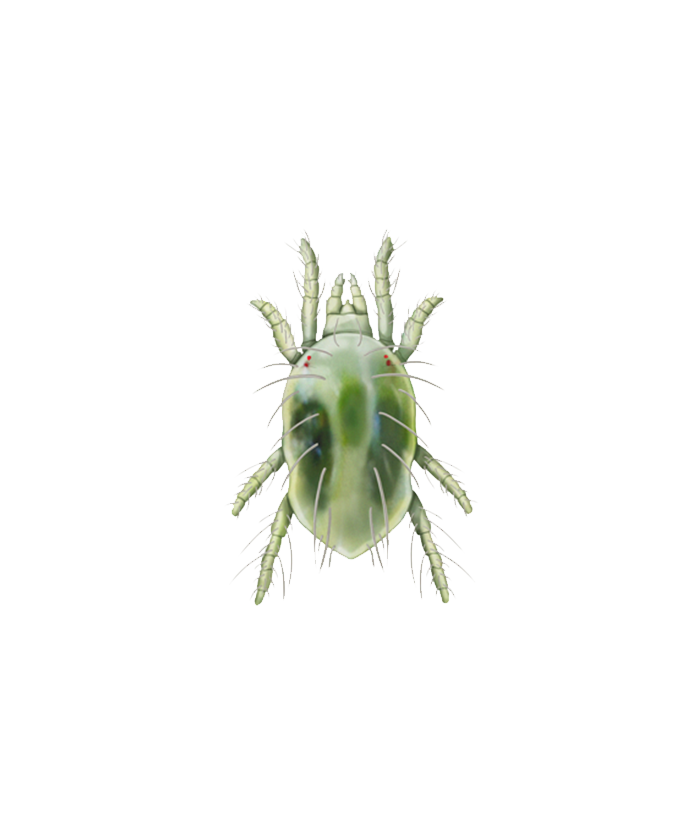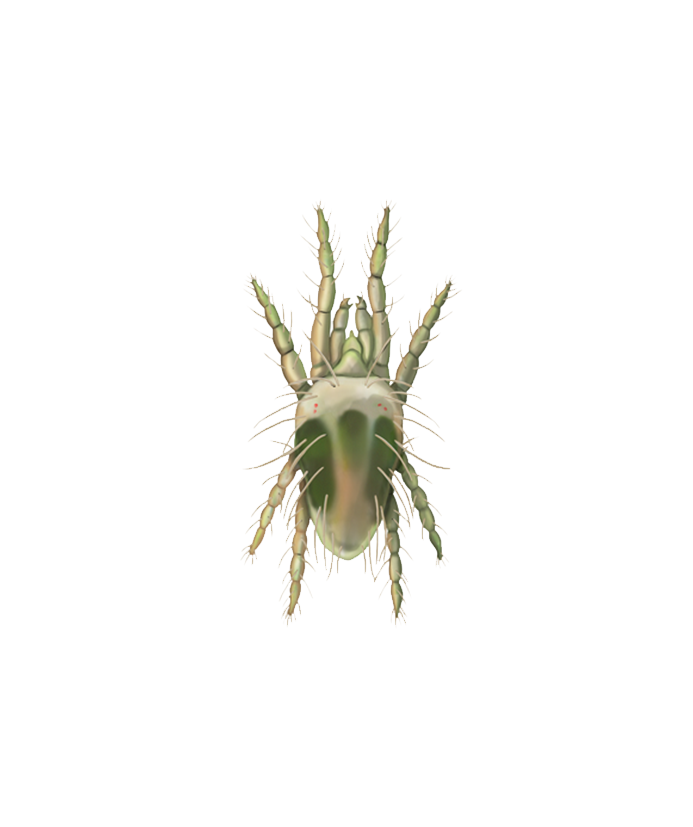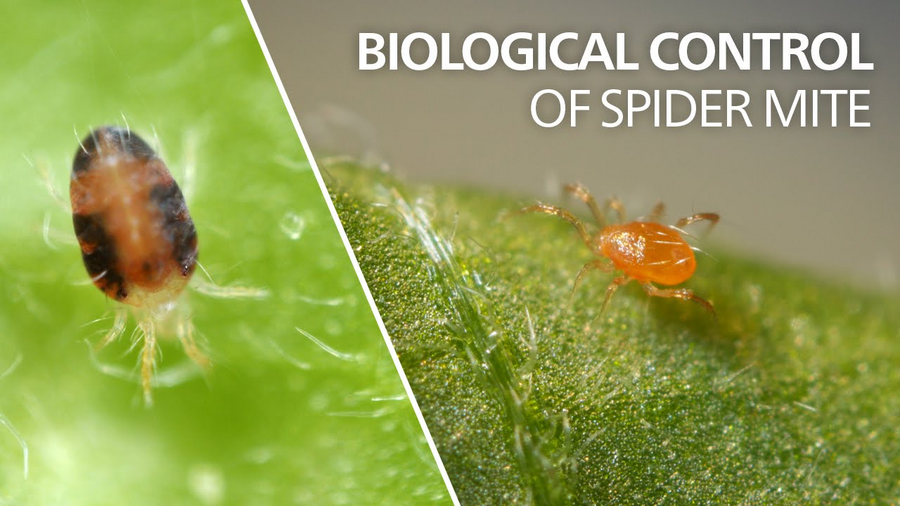


Was sind Spinnmilben?
Spinnmilben sind weltweit verbreitet und ernst zu nehmende Schädlinge für viele Kulturen. Trotz ihrer geringen Größe können sie aufgrund ihrer großen Reproduktionsfähigkeit sehr schnell schweren Schaden verursachen. Es gibt weltweit mehr als 1.200 Arten, von denen viele bekannte Pflanzenschädlinge sind. Die Gemeine Spinnmilbe, Tetranychus urticae, ist bei weitem der wichtigste Schädling in Gewächshäusern und vielen Freilandkulturen.
Recognize mites
Plant mites can be recognized by their small size and spider-like appearance. Spider mites and false spider mites are typically less than 1 millimeter in size, and range in color from pale yellow to green, brown, or red. They have eight legs and are closely related to spiders, but they lack the distinct body segmentation that spiders have. Gall mites and russet mites are so small that they cannot be seen with the naked eye and only have four legs. Tarsonemid mites cannot also not be seen with the naked eye but have eight legs. For these plant mites a magnifying glass is needed to detect them.
Plant mites are often found in colonies on the undersides of leaves, where they feed on the plant's sap. The damage caused by plant mites can result in discolored or speckled leaves, stunted growth, and in severe cases, leaf drop or death of the plant. Damage symptoms are important for early detection of plant-feeding mites and effective management, as their small size and tendency to hide on the underside of leaves can make them difficult to spot.
Schäden durch Spinnmilben
Larven, Nymphen und adulte Tiere schädigen die Wirtspflanze, indem sie sich vom Pflanzensaft ernähren. Sie treten vor allem auf der Unterseite der Blätter auf, wo sie die Zellen anstechen und den Inhalt aussaugen. Entleerte Zellen sterben ab und werden gelb; bei vielen Pflanzen bilden sich kleine gelbe Flecken auf der Blattoberseite. Die Zerstörung der Zellen hat eine eingeschränkte Photosynthese, eine erhöhte Transpiration und ein verringertes Pflanzenwachstum zur Folge. Bei zunehmendem Befall wird das gesamte Blatt gelb und stirbt ab, letztlich sogar die gesamte Pflanze. Nymphen und adulte Tiere weben auch Gespinste, die die gesamte Pflanze überziehen können und in denen sie leben. Gespinste und Blattflecken beeinträchtigen das Aussehen der Kulturpflanzen. Dies ist vor allem bei Zierpflanzen sehr nachteilig und reduziert den Verkaufswert.
How to prevent mites
Keeping your greenhouse crop free of plant mite infestations requires a combination of proactive measures. One key step is to maintain optimal growing conditions for your plants through proper watering, fertilization, and temperature control. Stressed plants are more vulnerable to mite attacks, so keeping them healthy and strong is essential. Regular monitoring of your plants for early signs of plant mites is also critical. This can be done by scouting the plants visually.
You can also take steps to prevent plant mites from entering your greenhouse by using hygienic measures such as removing weeds and other plants that may serve as a host for mites, and implementing a rigorous cleaning and disinfection program for all tools, equipment, and surfaces.
Finally, introducing biological control agents such as predatory mites can be an effective way to keep plant mite populations under control.
Videos zur Bekämpfung von Spinnmilben
Schauen Sie sich das Video an oder besuchen Sie unseren Youtube-Kanal, um unsere Produkte zur Bekämpfung von Spinnmilben in Aktion zu sehen.
